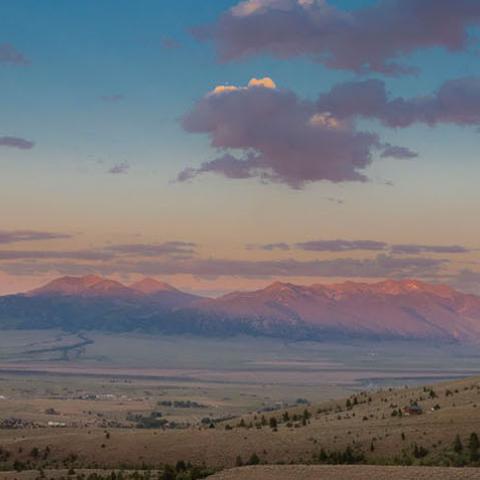
News
The Agricultural Conservation Easement Program (ACEP) helps landowners, land trusts, and other entities protect, restore, and enhance wetlands or protect working farms and ranches through conservation easements.
The Agricultural Conservation Easement Program (ACEP) helps landowners, land trusts, and other entities protect, restore, and enhance wetlands or protect working farms and ranches through conservation easements in North Carolina and across the U.S.
The ACEP protects the agricultural viability and related conservation values of eligible land by limiting nonagricultural uses which negatively affect agricultural uses and conservation values, protect grazing uses and related conservation values by restoring or conserving eligible grazing land, and protecting and restoring and enhancing wetlands on eligible land.
ACEP has two components:
Additionally, through ACEP, USDA offers the Wetland Reserve Enhancement Partnership (WREP), a voluntary program through which NRCS enters into agreements with eligible partners to leverage resources to carry out high priority wetland protection, restoration, and enhancement and to improve wildlife habitat.
Why are Easements Important?
According to a study by the American Farmland Trust, North Carolina could lose roughly 20% of its 8 million acres of farmland to development happening across the state by 2040. This puts them second, only to Texas in farmland lost to development. Agriculture remains a vital economic staple to North Carolina which recently posted over $100 billion in economic impacts for the state. Easements limit development use and keeps farms in production.
The Coastal Review reported that saltwater is creeping farther inland into the soil and surface waters of North Carolina’s coastal plain. This “saltwater intrusion,” as scientists call it, has an ability to transform freshwater landscapes long before they’re permanently drowned by the rising sea. Wetland restoration helps farms in North Carolina back away from rising water levels in places like the Pamlico Sound while providing natural protection from sea-level rise and salty high tides and storm surges.
Will I be Paid for an Easement?
The value of an easement is determined by a third-party appraisal. Any payments to you will come from the entity, not NRCS. NRCS provides cost-share assistance to eligible entities to purchase agricultural easements from landowners. NRCS cost-share generally will not exceed 50 percent of the fair market value of the agricultural land easement unless a waiver is granted for a special case. The entity must provide an amount that is at least as much as the NRCS contribution.
For example:

In special cases, such as Grasslands of Special Environmental Significance (GSS), NRCS may grant a waiver to the cost-share rules and pay up to 75 percent of the fair market value of the easement. GSS designation will be verified by NRCS onsite. Fair market value is determined by third party appraisal during Step 3. The entity hires the appraiser. The landowner does not pay for or participate in the selection of the appraiser; this responsibility will be taken care of by the entity. The entity will have enough knowledge of conservation easement values to make the landowner an offer based on an easement value.
Easements at Work
In fiscal year (FY) 2023, over another $11 million was invested in agriculture easements. This protected over 1 thousand acres of farmland and wetlands in North Carolina. Historically N.C.-NRCS has helped restore around a 1,000 acres of wetland each year with WRP/WRE, with a cost of approximately $3 to $4 million. Over the past 20 years 45,000 to 50,000 acres total of wetlands have been restored, with a majority of that being pocosin land. The easement section is continuing to process received applications and over 20 projects are in the acquisition process.
Contact your local service center to start your application.
Do you farm or ranch and want to make improvements to the land that you own or lease?
Natural Resources Conservation Service offers technical and financial assistance to help farmers, ranchers and forest landowners.

To get started with NRCS, we recommend you stop by your local NRCS field office. We’ll discuss your vision for your land.
NRCS provides landowners with free technical assistance, or advice, for their land. Common technical assistance includes: resource assessment, practice design and resource monitoring. Your conservation planner will help you determine if financial assistance is right for you.
We’ll walk you through the application process. To get started on applying for financial assistance, we’ll work with you:
Once complete, we’ll work with you on the application, or CPA 1200.
Applications for most programs are accepted on a continuous basis, but they’re considered for funding in different ranking periods. Be sure to ask your local NRCS district conservationist about the deadline for the ranking period to ensure you turn in your application in time.
As part of the application process, we’ll check to see if you are eligible. To do this, you’ll need to bring:
If you don’t have a farm number, you can get one from USDA’s Farm Service Agency. Typically, the local FSA office is located in the same building as the local NRCS office. You only need a farm number if you’re interested in financial assistance.
NRCS will take a look at the applications and rank them according to local resource concerns, the amount of conservation benefits the work will provide and the needs of applicants. View Application Ranking Dates by State.
If you’re selected, you can choose whether to sign the contract for the work to be done.
Once you sign the contract, you’ll be provided standards and specifications for completing the practice or practices, and then you will have a specified amount of time to implement. Once the work is implemented and inspected, you’ll be paid the rate of compensation for the work if it meets NRCS standards and specifications.